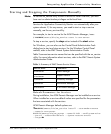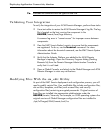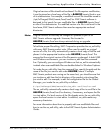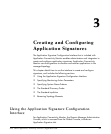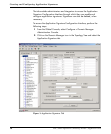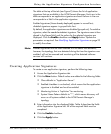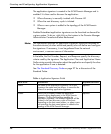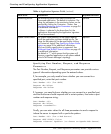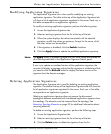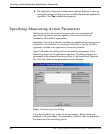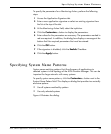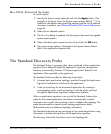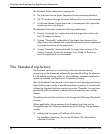
EMC Smarts Application Connectivity Monitor Configuration Guide 21
Using the Application Signature Configuration Interface
Port Number The port number on which the application should be
actively listening.
The same port number can be used for multiple
signatures. However, when the same port is used for
multiple signatures, the request strings and response
patterns must be mutually exclusive. For example:
Signature 1: port 25, response "*Sendmail*"
Signature 2: port 25, response "*Exchange*"
If the requests and responses are not different (that is,
inclusive), the results of the probes are unpredictable.
Required
Request The command string to send to the application in order
to generate a response from the application. The string
is sent after a connection on the specified port is
established. The server response is checked against a
specified pattern (see "Response" below).
Optional
Response The criteria to check the response message received
while checking the existence of the port number. Wild
card criteria specification is supported. See Wildcards
Used By EMC Smarts Software on page 43 for
additional information.
The system tries to receive (and match against)
responses in blocks of 1024 bytes. It reads at least 1
line of the server response if a Request was not
specified, and at least 2 lines of output if a Request
was specified. If the output includes a new-line
character (\n), the system reads and matches against
only 1 line.
Optional
Class The application class of the discovered application.
The drop down list includes Software Service and the
subclasses of Software Service.
Required
Application Name
Prefix
The prefix to be added to the instance names in the
topology discovered by the signature.
For example, if the application name Prefix is
"Apache" the discovered instance name of the
application will be "SW-
Apache/frame.company.com" and the display name
will be "Apache/frame.company.com".
Required
Table 4: Application Signature Fields (continued)
FIELD NAME DESCRIPTION REQUIRED/OPTIONAL



